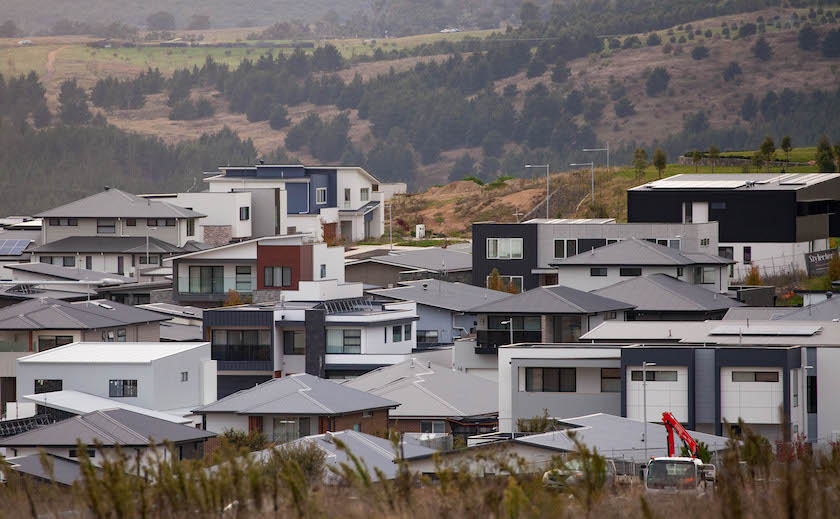Housing policy and other assaults on young Australians
Housing – a cruel hoax to impoverish coming generations

Mobile deception
Mobile deception
It is hard to find an independent economist who will endorse the Coalition’s proposal to allow first home-buyers to draw up to 40 percent, or $50 000, from their superannuation balances.
Saul Eslake has a scathing assessment of the proposal in a two-minute clip. “This reckless inflation of house prices must stop” he says.
Peter Hannam, writing in The Guardian, quotes from a number of economists who warn that the policy’s main consequence would be to make housing even more out of reach to young Australians: Coalition super housing policy likely to inflate prices by increasing demand, analysts say. Even the Coalition’s Minister for Superannuation, in a display of honesty that is out of keeping with her party’s standards, admitted that the policy would contribute to a rise in house prices.
The general point made by economists is that any measure that puts more money into housing, in the absence of measures to boost supply, is likely to drive up prices. One doesn’t need a PhD in economics to know that.
CoreLogic, drawing on data about superannuation fund balances, describes the fundamental inequity of the scheme. It would be of practical help only to those few well-off young people with substantial balances in their superannuation accounts, but the median superannuation balance for those aged between 25 and 34 is only $25 000. While $10 000 extra cash is not much help for the individual in an over-priced and inflating housing market, it comes at a cost later in life. At a 6 percent real annual accumulation, that $10 000 would be worth $100 000 when the now 30 year-old turns 70.
Both Labor and the Coalition have policies that stimulate housing demand, and that can entice people into taking on high debt to buy into a highly-priced market in which there is more assurance of a rise in interest rates than of a rise in income and house prices.
Neither party scores high marks for these policies, although Labor does have a greater commitment to investment in public housing. Labor’s shared equity scheme has the benefit of a means test, is capped to a small number, and involves the government sharing the risk of a fall in value, whereas the Coalition’s scheme has no means test and leaves the individual bearing all the risk. In fact it is based on an assumption that house prices will go on rising indefinitely. But as the consumer warning goes, “past performance is no guarantee of future performance”, and the ANZ Bank is predicting that house prices will fall in most capital cities later this year and in all capitals next year, even if there is a return to high levels of immigration.
Most importantly, and overlooked by some economists, the Coalition’s proposal, because it is based on withdrawing funds from superannuation, involves diverting money from financial markets – markets that fund corporations to invest in growth assets – to housing, which is a static investment.
For a party that claims to offer sound economic management this policy is extraordinarily irresponsible. Its claim of economic competence, however, is based not on evidence or demonstrated outcomes, but on a repeated litany of lies, echoed by its cronies and its backers in the Murdoch media.
This scheme is a case of political opportunism, targeted at those young people who might be dazzled by the prospect of $10 000 more towards a deposit, and who, in their years of schooling, have not learned the basics of critical thinking or financial planning.
One may believe that housing price inflation is simply an unintended consequence of a long period of low interest rates, but until an election loomed it hasn’t been a concern for the Coalition, who have generally gone along with the idea that there is something desirable about rising housing prices, even though it’s just inflation. That’s because of the “wealth effect” of rising house prices. Unless there have been extensive renovations, or some new locational advantage (such as a new subway station) when the market value of one’s house rises it’s generally nothing more than inflation. In fact a house is a normal deteriorating asset and the land on which it sits doesn’t change. But many people feel better off when the market value of their house rises, when in fact the only people to benefit from rising real-estate values are mortgage brokers and real estate agents, members of the Coalition’s precious and politically loyal “small business” community.

Still out of reach for most young people
No country for young men or young women
Unaffordable housing isn’t the only cruelty inflicted on young people. The ABC’s Daniel Ziffer, drawing on the considered opinions of economists and other analysts, warns that intergenerational inequality will rise as tax and welfare perks target older voters. Ian Verrender has an article analysing the costs of tax breaks favouring property speculators ($28 billion a year) and the cost of superannuation tax concessions ($43 billion a year): The missing election ingredient: nothing here for the next generation.
These are some of the more easily quantified intergenerational inequities. To mention a few more:
There is a whole set of rebates and incentives applying to private health insurance that result in younger people subsidising health insurance for those over 55.
Demographic changes mean that as people live longer their children enjoy the windfall of an inheritance when they themselves are in their 50s and 60s, when their years of high expenditure are largely over. The case for an inheritance tax is now much stronger than it was a couple of generations ago, when the inheritance generally came to children during their years of high expenditure as they were establishing households. (Our modest inheritance tax was abolished in 1978 – probably the very worst time, as life expectancies were rising very quickly.)
Universities were once free, first through easily available Commonwealth undergraduate scholarships and later they were free for all, but free university tuition went by the wayside in 1974 (one of the Whitlam government’s less egalitarian changes), and since then university fees have steadily increased.
There is something badly wrong with our tax and transfer system.